Master the Red Hat Linux Command Line: My Learning Experience
 Muhammad Irfan
Muhammad IrfanTable of contents
- 1️⃣ Mastering and Exploring File System Management
- 2️⃣ Advanced Filesystem Management: Deep Dive
- 3️⃣ Creating and Mounting Visual Data Optimizer (VDO)
- 4️⃣ Creating SWAP Files and Partitions
- 5️⃣ Mounting and Unmounting CIFS and NFS
- 6️⃣ Mastering Logical Volume Management (LVM)
- 7️⃣ Bonus: Access Control Lists and NTP Configuration
- 8. Enterprise Impact: These skills are fundamental for:💡
- 9. Career Applications:🎯
- 10. Learning Resource: 📚
- 11. Conclusion

Embarking on a Linux learning journey has been nothing short of exhilarating. Over the last six days, I immersed myself in the world of Red Hat Enterprise Linux (RHEL), tackling one complex topic after another. From mastering file systems to exploring enterprise storage solutions, every step was a building block to becoming a proficient Linux System Administrator. Here's my story, broken down into seven distinct lessons, each more enlightening than the last.
1️⃣ Mastering and Exploring File System Management
The journey begins here.
I explored how to manage file systems, learning how to create and manage partitions. Commands like lsblk helped me understand how disks are structured. Here's an example:
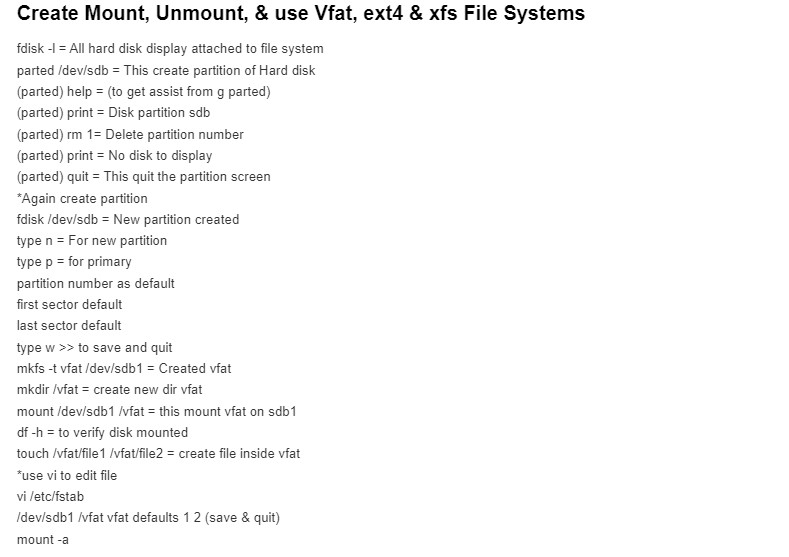
What I loved: Realizing the power of managing storage directly from the CLI was a game-changer!
2️⃣ Advanced Filesystem Management: Deep Dive
“A step into enterprise storage.”
On the second day, I dove deeper into storage management, exploring advanced commands for monitoring disk usage. Tools like du and df became my go-to for storage insights.
Here's an example that amazed me:
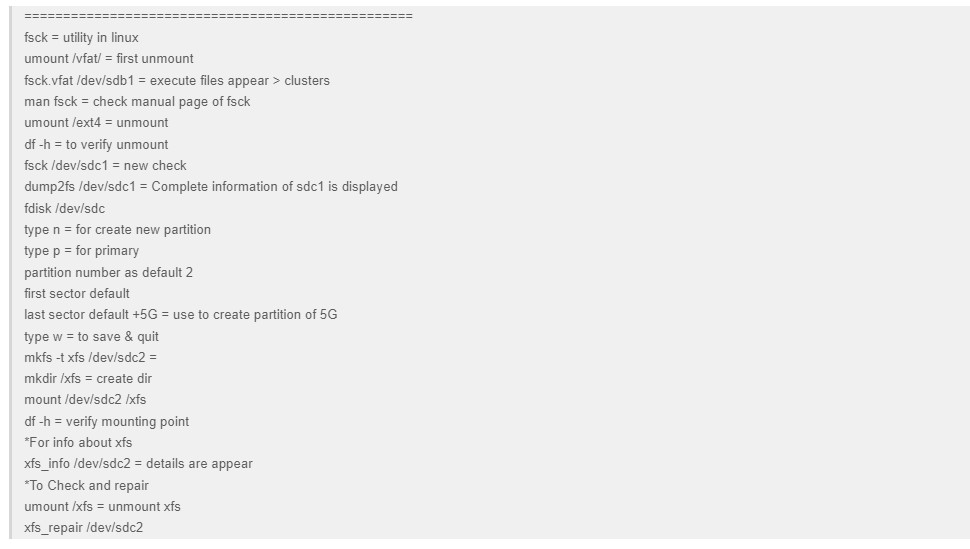
Takeaway: Knowing what’s happening in your storage is crucial for efficient system management!
3️⃣ Creating and Mounting Visual Data Optimizer (VDO)
“Optimizing space like a pro.” Visual Data Optimizer (VDO) was something new. I learned how to compress and deduplicate data to save storage space, which is especially critical in enterprise environments.
Here’s how I created a VDO volume:
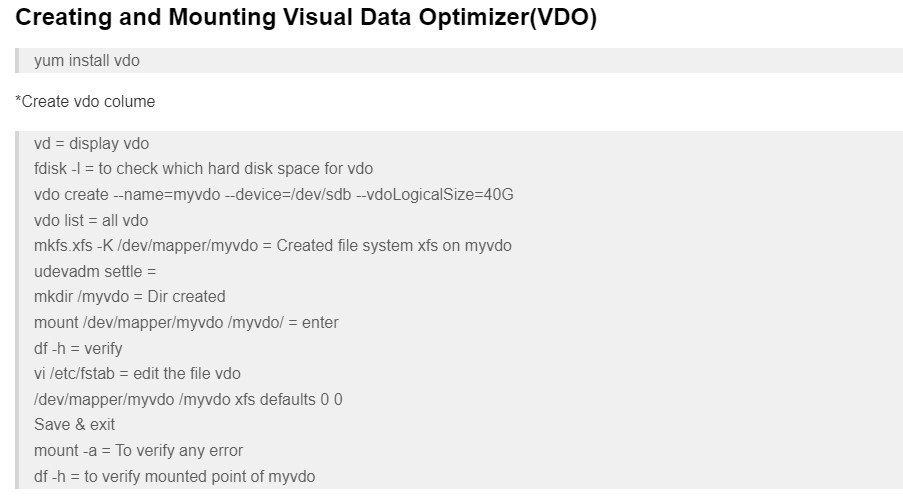
Highlight: Seeing how data optimization reduces storage requirements is nothing short of magical!
• Configured Visual Data Optimizer
• Optimized storage efficiency
• Implemented data deduplication
Key Learning: VDO can significantly reduce storage costs in enterprise environments.
4️⃣ Creating SWAP Files and Partitions
“The safety net for memory overloads.” Swap memory helps when the RAM is fully utilized. I learned to create a swap file to act as extended memory, ensuring smooth system operation.
Here's how I created a swap file:
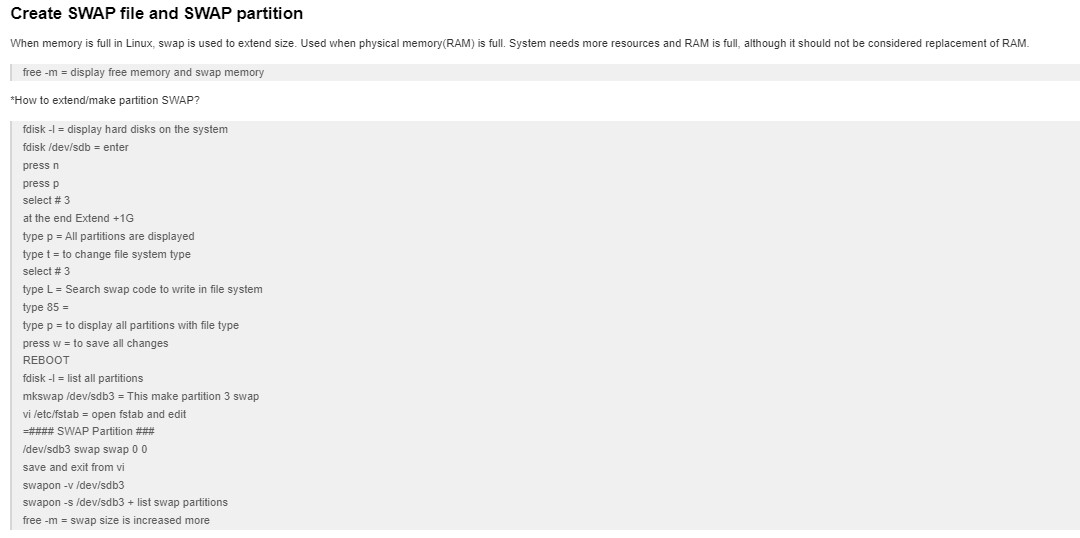
Insight: Swap is like a lifeboat, ready to save the system in critical moments.
• Created and configured swap files
• Implemented swap partitions
• Optimized system memory management
Key Learning: Proper swap configuration is crucial for system performance.
5️⃣ Mounting and Unmounting CIFS and NFS
“Bridging the Linux-Windows gap.” I explored NFS for Linux-to-Linux file sharing and CIFS for connecting Linux with Windows systems. This was particularly useful for hybrid environments.
Here’s how I mounted an NFS share:
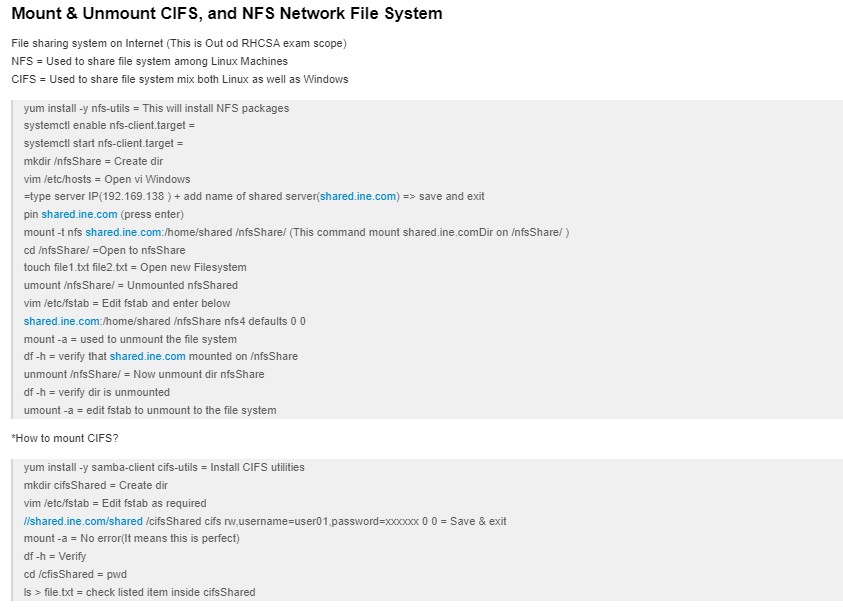
Learning: Interoperability is key in today’s interconnected world.
• Configured CIFS and NFS
• Implemented network share mounting
• Managed remote filesystem access
Key Learning: Network filesystem management is essential for enterprise collaboration.
6️⃣ Mastering Logical Volume Management (LVM)
“Scaling storage dynamically.”
LVM has to be one of the most powerful storage tools I’ve ever encountered. It allows dynamic resizing of storage volumes, making it ideal for cloud environments.
Here’s how I created an LVM:
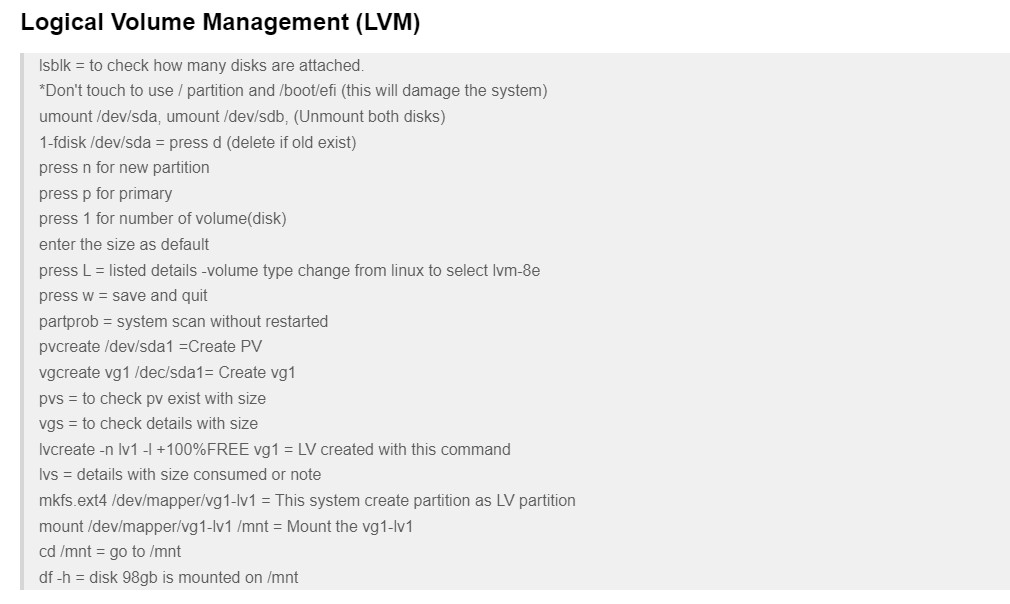
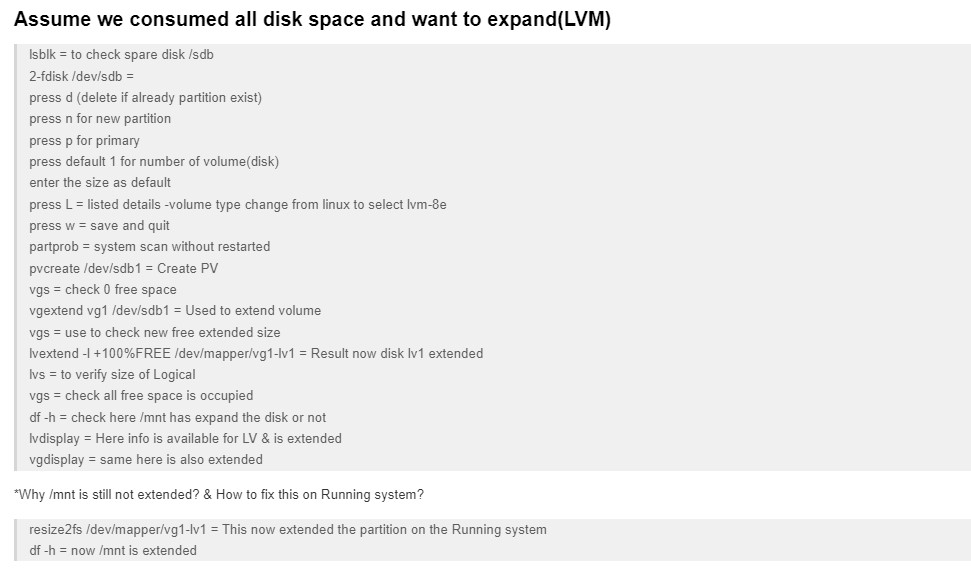
Takeaway: The ability to scale storage on the fly is an invaluable skill for system administrators.
7️⃣ Bonus: Access Control Lists and NTP Configuration
“Fine-grained control and perfect timing.”
ACLs taught me how to manage specific user permissions, while configuring an NTP server helped me ensure accurate time synchronization.
Here’s how I configured an NTP server:
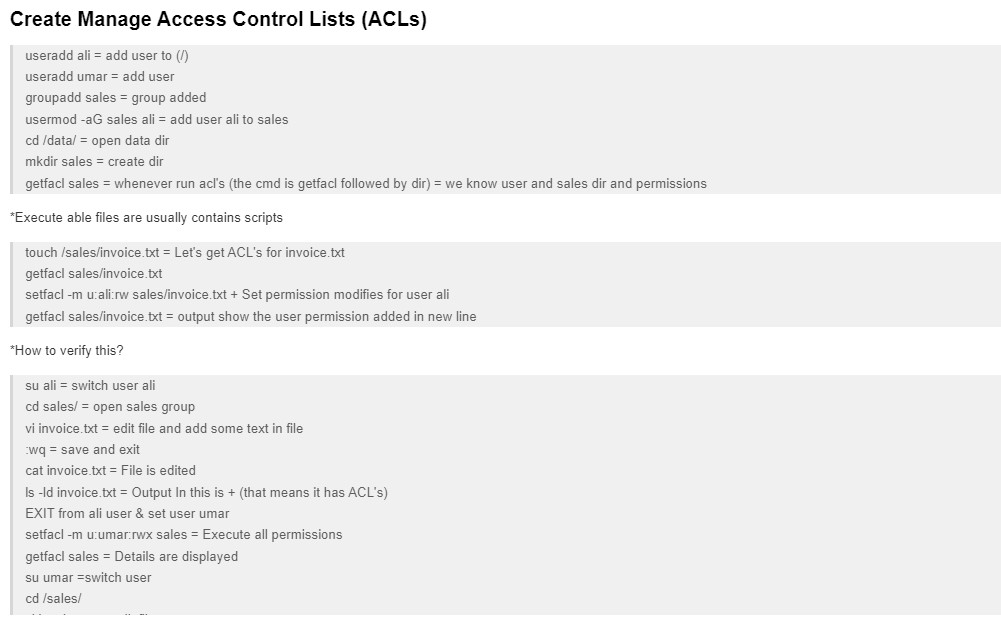
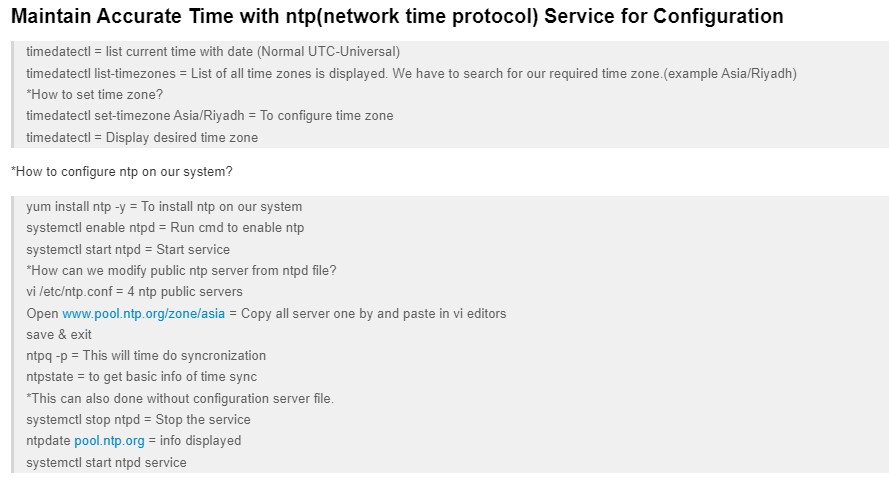
Realization: Permissions and timing are the unsung heroes of system stability.
8. Enterprise Impact: These skills are fundamental for:💡
• System reliability
• Data security
• Storage optimization
• Network integration
• Access control
9. Career Applications:🎯
• Linux System Administration
• DevOps Engineering
• Cloud Infrastructure Management
• Site Reliability Engineering
10. Learning Resource: 📚
"Master Linux Administration" by Mohamed Khalil on Udemy - An excellent resource for aspiring Linux professionals.
11. Conclusion
Over a six-day journey, I delved into Red Hat Enterprise Linux, mastering essential system administration skills. I explored file system management, advanced storage solutions with VDO, swap file creation, CIFS and NFS mounting, logical volume management, and access control lists, alongside NTP configuration. These experiences laid a robust foundation for a career in Linux system administration, emphasizing the importance of efficient storage management, interoperability, and system reliability.
#LinuxAdministration #RedHatLinux #LearningLinux #FileSystemManagement #LVM #NTPConfiguration #LinuxCLI #DevOpsJourney
Subscribe to my newsletter
Read articles from Muhammad Irfan directly inside your inbox. Subscribe to the newsletter, and don't miss out.
Written by

Muhammad Irfan
Muhammad Irfan
I am passionate about the transformative power of Linux, DevOps, and cloud technologies. With a background in system administration, I’m on a journey to master cloud infrastructure, automation, and containerization. On my GitHub, you’ll find projects where I explore automation, AWS, CI/CD, and scripting to solve real-world problems. 📚 Current Focus: Enhancing my expertise in Linux systems, AWS, and scripting. Here, I share insights and experiences from my hands-on projects to help and inspire fellow tech enthusiasts.